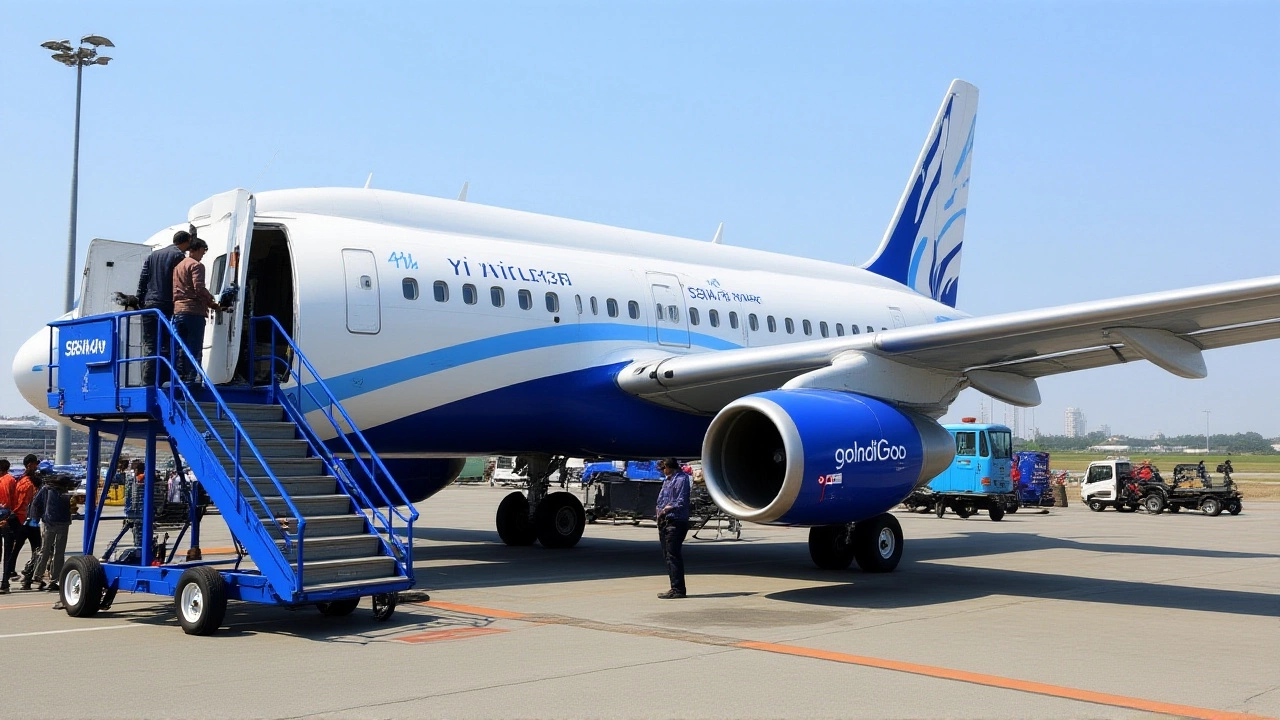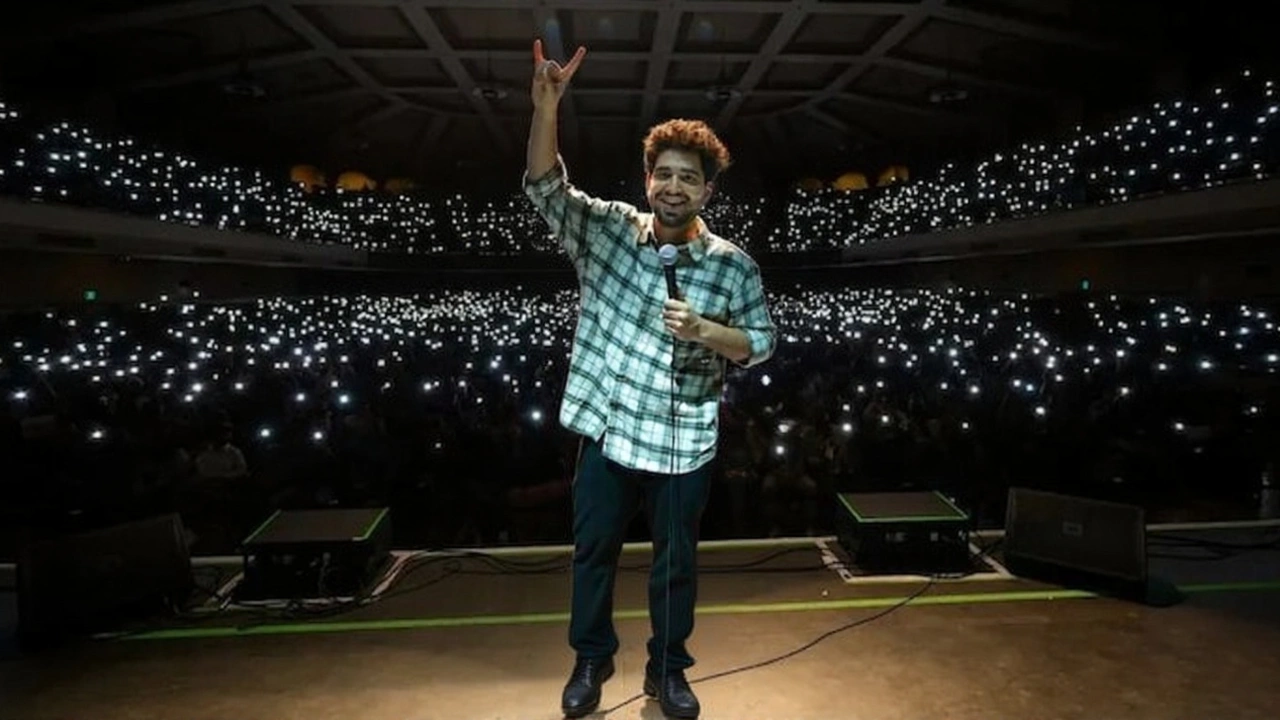200+ Flights Delayed at Delhi Airport After ATC System Glitch

When the Indira Gandhi International Airport in Delhi ground to a halt on November 6 and 7, 2025, it wasn’t just travelers who suffered — it was a system that had been screaming for help for months. Over 200 flights were delayed, nearly 100 cancelled, and passengers spent hours trapped in terminals as air traffic controllers scrambled to manually process flight plans after a catastrophic failure in the Automatic Message Switching System (AMSS). The average delay? 55 minutes. For some, it was far worse. Between 6 a.m. and 8 a.m. on Friday, November 7, delays stretched past two hours. And this wasn’t a one-off glitch. It was the inevitable result of a system left to rot while air traffic grew by 40% in five years.
What Broke — And Why It Was Predictable
The AMSS, the digital nervous system that routes flight data between aircraft, ground stations, and controllers, went dark. No automated updates. No real-time tracking. Just silence. Controllers at Indira Gandhi International Airport were forced to rely on old-school paper logs, radio calls, and handwritten charts — a method last common in the 1990s. The result? Bottlenecks. Confusion. Chaos.According to Flightradar24, the average delay was 55 minutes. But that number hides the real pain: over 800 flights delayed across two days, nearly 100 cancelled, and terminals turned into human holding pens. IndiGo, Air India, and SpiceJet all issued advisories, urging passengers to check status repeatedly. One traveler told Moneycontrol: "I missed my connecting flight to London. I’ve been sitting here since 4 a.m. They told me to wait — but for what? No one knew."
Here’s the twist: this wasn’t a surprise. Back in July 2025, the Parliamentary Standing Committee on Transport, Tourism and Culture issued a blunt warning: India’s ATC infrastructure was "showing significant performance degradation." The report, based on expert testimony and system audits, explicitly stated that controllers were being forced to perform manual tasks that automated systems handle effortlessly in Singapore, Frankfurt, or even Dubai. "When both the human and the machine elements of a safety-critical system are under strain, the system’s overall resilience plummets," the committee wrote. And yet — nothing changed.
Who Was Supposed to Fix This?
The Airports Authority of India (AAI), a government body under the Ministry of Civil Aviation, is legally responsible for maintaining India’s air traffic systems. Its Air Navigation Services (ANS) wing handles day-to-day operations. But for years, budget constraints and bureaucratic inertia kept modernization plans on paper.On November 8, Ram Mohan Naidu Kinjarapu, the Civil Aviation Minister, visited Delhi airport. "Teams from AAI, ANS, and Electronics Corporation of India Limited worked tirelessly," he said. "We’ve restored operations. Now we’ll find out why this happened — and make sure it never happens again."
But "never again" is a promise, not a plan. ECIL, a public sector tech firm from Hyderabad, helped fix the immediate issue — likely a software crash compounded by power fluctuations. But the root cause? That’s still under investigation. No timeline has been given for system upgrades. No funding has been allocated. And the Directorate General of Civil Aviation (DGCA), India’s aviation watchdog, is still waiting for AAI’s full incident report.
The Cost of Inaction
Every minute a plane sits on the ground, airlines lose money. According to Moneycontrol analysts, each delayed aircraft costs between ₹50,000 and ₹75,000 per hour in fuel, crew overtime, passenger compensation, and slot penalties. With over 800 flights delayed and many grounded for hours, industry losses likely exceeded ₹100 crore — roughly $12 million. That’s not just a number. It’s money stolen from passengers, pilots, and frontline staff who had to work double shifts.Meanwhile, the ATC Guild, the union representing air traffic controllers, has been raising alarms since 2023. They’ve warned of burnout, stress-induced errors, and outdated equipment. One controller, speaking anonymously, said: "We’re not just managing planes. We’re managing panic. Every time a system fails, we’re the ones who have to hold the sky together with duct tape and prayers."

What Happens Next?
The government says it’s committed to modernization. But promises have been made before. In 2021, a ₹4,000-crore ($480 million) ATC upgrade plan was announced. Two years later, only 12% of it was implemented. This time, the pressure is different. The public saw the chaos. Airlines are furious. Travelers are losing trust.Experts say India needs three things immediately: 1) Redundant backup systems — not just one AMSS, but a fail-safe mirror system; 2) AI-powered conflict detection tools to assist controllers; and 3) A legally binding deadline for full automation. Without these, another glitch isn’t a question of "if" — it’s a question of "when."
For now, flights are running. But the system is still fragile. And everyone knows it.
Frequently Asked Questions
How did this glitch affect passengers beyond delays?
Beyond delays, over 100 flights were outright cancelled across November 6–7, stranding travelers at Delhi and disrupting connections to international hubs like Dubai, London, and Singapore. Many passengers missed critical appointments, medical treatments, and business meetings. Airlines offered meal vouchers and hotel stays, but compensation claims are still pending. The emotional toll — especially for families with children and elderly travelers — was immense, with reports of panic, dehydration, and exhaustion in terminals.
Why didn’t AAI upgrade the system sooner?
Despite repeated warnings from the Parliamentary Standing Committee and the ATC Guild, AAI cited budget constraints and procurement delays. The AMSS was installed in 2014 and never replaced. Budgets for ATC modernization were consistently reduced or redirected to other infrastructure projects. Even the July 2025 report’s recommendation for a technical audit was never funded. Critics argue political priorities and bureaucratic inertia outweighed safety concerns.
Which airlines were most impacted?
IndiGo, India’s largest airline with over 40% market share, reported the highest number of delays due to its dense network of northern Indian routes. Air India, still transitioning after privatization, faced operational chaos as its crew scheduling systems couldn’t sync with manual ATC updates. SpiceJet, which relies heavily on early morning departures from Delhi, saw nearly 40% of its Friday flights delayed beyond two hours. All three carriers had to ground aircraft to avoid further disruptions.
Is this a problem only in Delhi?
No. While Delhi’s AMSS failure was the most severe, similar aging systems are in use at Mumbai, Bengaluru, and Hyderabad airports. The July 2025 parliamentary report flagged these as "high-risk". Mumbai’s ATC system, for example, still uses legacy hardware from the 1990s. Experts fear this Delhi incident could be the first of many unless nationwide upgrades are prioritized — and fast.
What’s the government’s timeline for fixing this?
As of November 8, 2025, no official timeline has been announced. Civil Aviation Minister Kinjarapu ordered a root-cause analysis and redundancy enhancements, but deadlines are absent. The DGCA is awaiting AAI’s report, which could take weeks. Without public pressure or legislative action, upgrades may again be delayed for years — leaving India’s skies vulnerable to the next failure.
Could AI have prevented this?
Potentially, yes. AI-driven conflict detection systems — already in use in the U.S. and EU — can predict routing conflicts before they occur, even during manual operations. The July 2025 report specifically recommended adopting such tools. But India’s ATC systems lack the data infrastructure and software integration needed for AI. Retrofitting them now would cost billions — but the cost of doing nothing, as this incident proved, is far higher.




